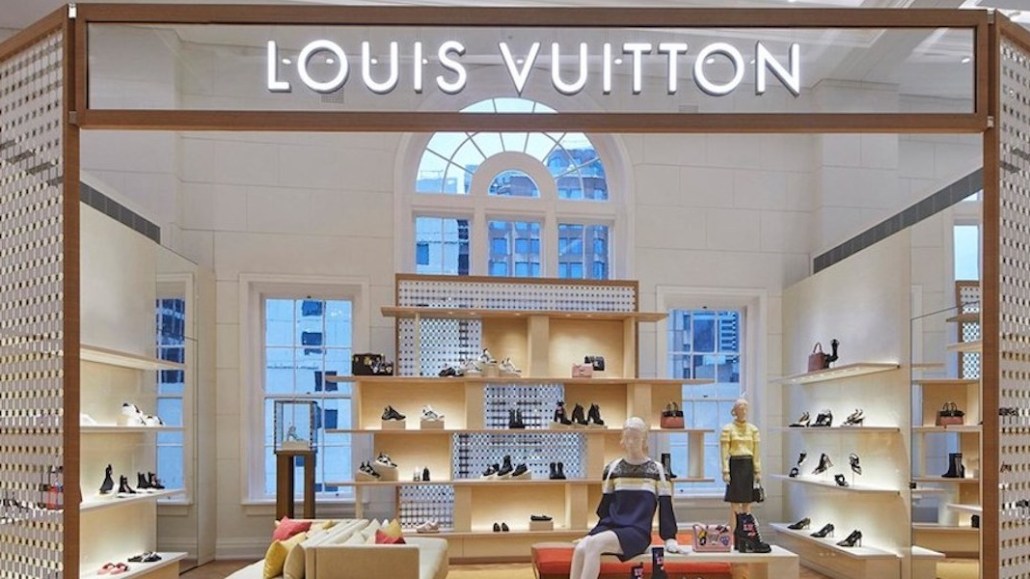Insights from CTV leaders at Dentsu, Horizon Media and more
How fashion brands are fighting back against retailers’ dominance in paid search

At a recent preview of L2’s Fashion IQ Index report, an analyst referred to fashion retailers and brands as “frenemies.” That characterization of the relationship between the two has only become more accurate over the last year. As many fashion brands increase focus on direct retail, retailers have been forced to become more competitive with brands. So far, retailers are outpacing their brand counterparts in some key areas like paid search. For this reason, among others, DTC revenue has become a major area of focus for brands across the fashion industry.
“We increasingly hear from brands that DTC is their top priority, so if that’s the case, then they do need to strengthen their commerce capabilities, because right now, consumers have a lot of reasons to opt to buy from a retailer’s site instead,” said Lauren Price, director of client strategy for luxury and specialty at research firm Gartner L2. “Brands who want to grow their DTC business in meaningful ways need to both catch up on fulfillment and excel at merchandising and product information, and be the ultimate source of record about their products.”
Retailers have long dominated paid search in a way that brands have not been able to keep up with. In Google searches for luxury brands, retailers own 50 percent of the results, while only 7 percent come from the actual brands themselves. (The rest is made up of 9 percent resellers and 34 percent “other.”) This means that when customers search for certain products, it is retailers that are most likely to stand out.
Seventy percent of consumers start their path to purchase on search, making it an incredibly powerful tool in guiding the purchasing process. Brands often cannot compete with retailers in terms of the amount of spend they can lavish on paid search ads. Some brands have invested anyway, like Louis Vuitton. Last year, more than 40 percent of the brand’s search terms were returning results from resellers. Now, 50 percent belong to Louis Vuitton itself and only 25 percent to resellers.
“As fashion brands have increased their investments in digital marketing over the past few years, search seems to be the area most neglected,” Price said. “Display advertising and social are a more natural fit for brands used to traditional off-line marketing, but search is actually the most effective way to reach qualified, high-intention customers. Brands need to reallocate their spend and focus to ensure they’re visible, prioritizing product listing ads.”
Most of the time, brands and retailers work in concert with little reason to compete with each other. Paid search, due to its nature, is competitive. The results that come closer to the top are more likely to be clicked on and the more you pay, the higher you can get those results. This drives a wedge between brands and retailers, forcing them to spend more and more on paid search to outdo each other, much to the delight of Google.
But other brands have taken another path to regaining control of their search results: focusing on brand exclusives. Michael Kors recently began winding down the number of retail partners it ships to in favor of more direct retail options. While still selling products through retail partners, Michael Kors began creating products that are only available through the brand’s direct store. If a product is only sold through the brand’s store, it will be the only option that comes up when that product is searched for. These strategies can be helpful as brands seek to compete with retailers and resellers.
Direct retail has become a major trend for some of the more prestigious brands in fashion. Gucci, for example, said earlier this summer that it is aiming for wholesale retail to make up less than 10 percent of its overall revenue.
“As brands become more retail-centric (selling through owned channels), omnichannel capabilities will become more important,” said Brian Lee, associate director at Gartner L2. “Luxury consumer expectations have been set by luxury e-tailers and Amazon Prime. If brands want to compete, they need to at least match these expectations or have some sort of unique differentiator that brings people to buy from a brand site. Why should a consumer buy from a brand property, if they can get the same thing from a retailer for the same price, and get faster shipping or better customer service?”
Brands have an uphill battle ahead of them if they seek to take on retailers. But the rise of prominent and successful DTC fashion brands, as Glossy explored at length at the recent DTC-themed Glossy Forum, bodes well for the brands that decide to take the direct retail route.
More in Marketing

Retail media’s mid-2025 reality: Why advertisers are going all in on full-funnel
Retail media’s meteoric rise may finally be leveling off — and that’s forcing advertisers to take a harder look at what they’re getting for their money.

TikTok might be working on a standalone U.S. app, but marketers aren’t sold on the idea – yet
TikTok is developing a lifeboat for its American business, but media buyers are wary of advertising implications.

Bold Calls for the back half of 2025
Now’s a good moment as any to take stock —and make a few bold calls about what’s coming next.









